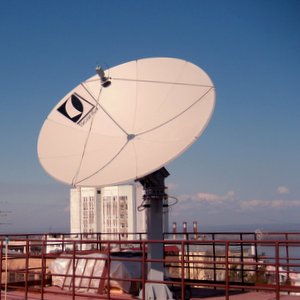Students of Samara National Research University, members of the Space Gradient Club (*), will develop the electronic constructor for Russian schoolchildren to independently assemble stations for receiving data from space satellites and the ISS.
The project on creation of the constructor has won the competition of the “UMNIK” program, and received financial support from the Innovation Promotion Fund (**). The development can help in formation of schoolchildren’s interest in professions of the space industry. The distinctive features of the Samara project are compact design, ease of assembly, configuration and use.
“Currently existing training stations for receiving satellite information intended for educational purposes, as a rule, require mandatory installation of the antenna on the roof of the building. This makes it difficult to use the stations for many educational organizations – such as, for example, schools or radio clubs. Moreover, constructors available on the market for assembling such stations usually are complex enough to be assembled by schoolchildren. The satellite data receiving station under development will be compact, easy to assemble and convenient to use: during classes, it can be installed in any open place, for example, in the school yard, and after classes, it can easily be folded and carried into the building,” told us Dimitry Nikishin, a student of Samara University, the author of this project.
Currently, our country pays special attention to creation and development of domestic orbital satellite systems. In April of this year, the Government of the Russian Federation approved the federal project “Sphere” – one of the key projects of Roscosmos, involving large-scale deployment of multi-satellite groups for various purposes, such as communication, navigation, remote sensing of the Earth. Equipping schools and technical creativity clubs with similar stations for receiving data from space will help attract the younger generation’s attention to the space industry and the study of the basics of satellite communication, which, perhaps, will result for someone in choosing a space-related profession in future. However, the Samara development will help to enliven and deepen the educational process in ordinary school subjects.
“There are a lot of unencrypted, open satellite signals in space, which bear useful information. It can be applied at various school lessons – Geography, Computer Science, Physics. The receiving station under development will be able, for example, to get Earth remote sensing data – images of the Earth’s surface made with resolution of about 1 km per pixel. The station will make it possible to obtain scientific data – readings of various sensors installed on scientific and educational nanosatellites of the CubeSat format. You will be able to even hear voice messages from the ISS. Our development will also be useful for receiving telemetry during amateur rocket launches, for getting information from atmospheric and stratospheric probes, or, for example, as a receiving station at the CanSat championships, these are competitions for launching homemade picosatellites, no larger than an ordinary aluminum soda can and weighing up to 350 g, at altitudes of about a kilometer,” noted Dimitry Nikishin.
Difficulties in receiving a signal from orbit often arise due to the fact that it is necessary to accurately point the antenna at a particular satellite, for this you need to know the exact location of the spacecraft at a certain time. Samara developers will introduce into the station the automatic antenna guidance mechanism that will greatly facilitate the setup of signal reception.
Structurally, the receiving station will consist of three parts: the antenna, the rotary mechanism with the tripod, and the radio receiver that will be connected to a laptop. For operating the rotary mechanism, the developers will write special software. According to Dimitry Nikishin, since the constructor will be assembled by schoolchildren, it is required to develop the antenna design that will be least sensitive to defects of non-professional assembly.
As part of the grant, work on calculation of specifications of the antennas will be carried out, and the most optimal and easy-to-manufacture and operate design will be selected. It has been previously determined that the station will operate in the 120–150 MHz and 430–460 MHz bands. The preliminary antenna sample will undergo the cycle of tests and improvements in the University laboratory.
For reference
* The Space Gradient Club of Youth Aerospace Instrumentation was founded at Samara University in 2019. On the basis of the Club, student scientific and technical projects are implemented. The main field of activities of the Space Gradient Club is creation and design from scratch of atmospheric and stratospheric apparatuses, probes, as well as potentially space satellites of nano- and picoclasses.
* “UMNIK” (Participant of the Youth Scientific and Innovative Competition) is a program intended to identify and support young scientists striving for self-realization via innovative activities. “UMNIK” has existed since 2007. During this time, more than 70 thousand persons have taken part in it, over 12 thousand of them becoming winners. The program is carried out in five areas. The program winners receive funding to the effect of 500 thousand rubles for a period of two years to develop a scientific innovative project.
